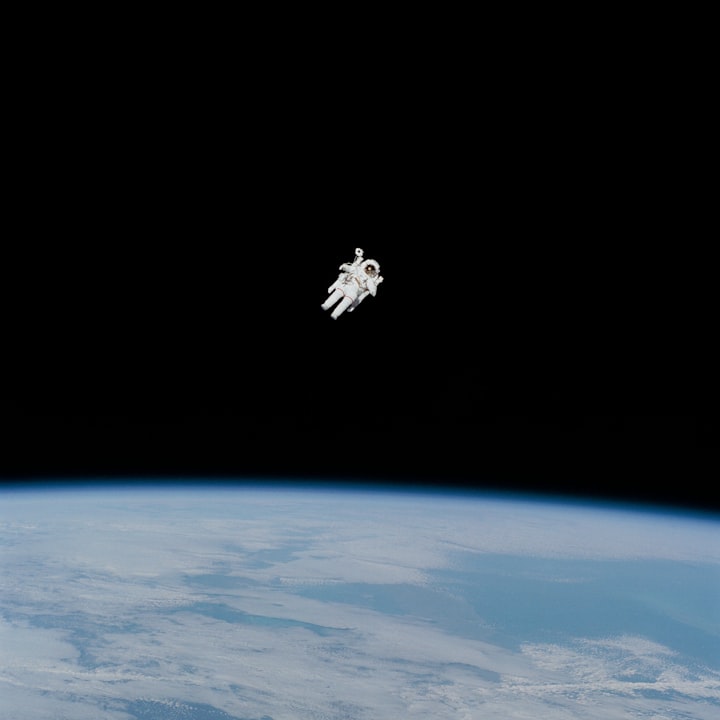Title: The Eerie Sounds of Space: Unveiling the Chilling Side of the Cosmos
Introduction:
The popular notion that space is a vast void devoid of sound is not entirely accurate. While the absence of molecules in space prevents traditional sound propagation, NASA and other space agencies have managed to capture and convert various cosmic phenomena into eerie soundtracks. These space sounds, recorded through specialized instruments, reveal a haunting side of the universe that can send shivers down your spine. From magnetic field fluctuations to signals from distant galaxies, let's delve into the captivating and bone-chilling sounds of space.
Recording Cosmic Sounds:
To comprehend how cosmic sounds are captured, it's essential to understand that sound is the result of molecular vibrations. However, space is predominantly a vacuum with an infinitesimal amount of matter. NASA scientists circumvent this challenge by focusing on waves that can be detected through specialized instruments. For instance, radio waves, which can be received by radio devices, are among the wave types they utilize. Satellites and probes capture fluctuations in plasmas, magnetic fields, and other cosmic phenomena, which are then transformed into audible soundtracks.
The Creepy Sound of Earth's Magnetic Field:
The Earth's magnetic field, an invisible shield protecting us from harmful radiation and solar winds, has a sound of its own. Although imperceptible to our senses, scientists from the Technical University of Denmark converted recorded magnetic waves into an audio track. The result is a spine-chilling sound resembling an eerie entity lurking in the darkness. It evokes imagery of a haunting presence creeping through the night, instilling a sense of unease.
Puzzling Radio Signals from Distant Space:
In recent years, scientists have detected peculiar radio emissions originating billions of light-years away. Known as fast radio bursts, these signals typically last mere milliseconds. However, one unique signal endured for approximately three seconds, prompting comparison to a heartbeat. While pulsars or neutron stars likely produce these signals, the precise nature of the source remains a subject of scientific investigation. This discovery echoes Nikola Tesla's encounter with similar phenomena, which he mistakenly believed to be extraterrestrial messages.
Mysterious Signals from the Dark Side of the Moon:
During the Apollo 10 mission in 1969, astronauts flying past the dark side of the Moon encountered peculiar sounds that left them uncertain whether to report them to NASA. The recorded audio seemed otherworldly, evoking a sense of disquiet. However, NASA explained that these were likely radio waves interfering with one another due to proximity, debunking any extraterrestrial theories. Nonetheless, the astronauts' initial apprehension adds to the enigmatic aura surrounding these sounds.
Sinister Serenades from Venus, Jupiter, and Saturn:
Venus, renowned as the most hazardous planet in the solar system, emitted horrifying sounds during the exploration missions conducted in the 1980s. Toxic and inhospitable, Venus offered an unsettling soundscape before the probes succumbed to its harsh conditions. On the other hand, Jupiter, the colossal gas giant, revealed a cosmic boom when its magnetic field clashed with the solar wind. The resulting sound evokes imagery of a collision between a sea wave and a rock, both powerful and unsettling. Similarly, Saturn's radio waves, auroras, and thunderstorms emitted uncanny noises, resembling a chorus of tortured souls or a popping corn machine.
Interstellar Recordings and the Unsettling Void:
The Voyager 1 spacecraft, launched in 1977, ventured beyond the solar system and entered interstellar space in 2012. During its journey, it captured the sound of plasma waves, lasting seven months but condensed to a mere 12 seconds. Although not conventionally chilling, the recording imparts a sense of unease and reminds us of the vast, lonely void that exists beyond our planetary boundarie






Comments
There are no comments for this story
Be the first to respond and start the conversation.